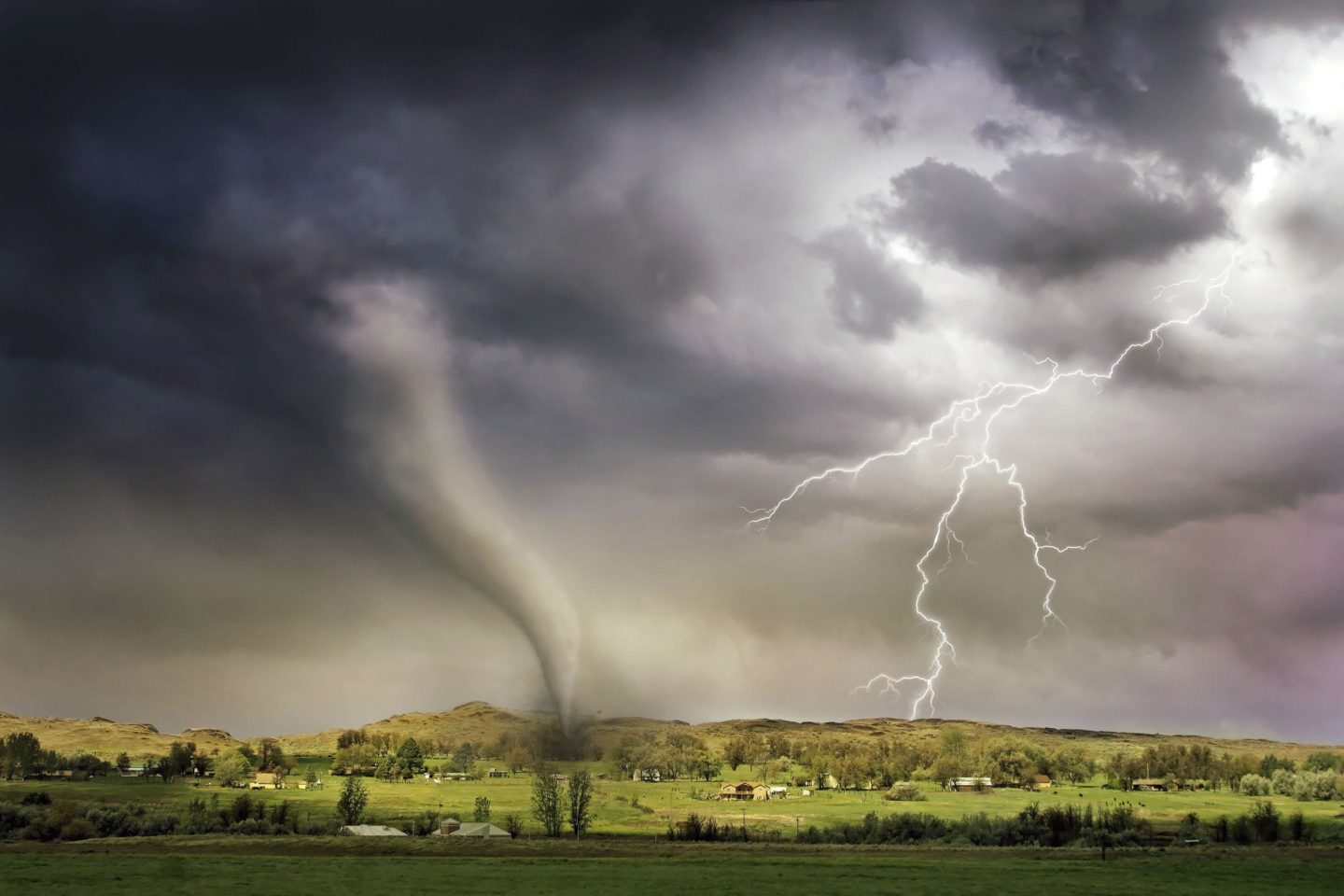
The end of corporate passivity: Why business leaders must shape geopolitics, not just react to it
To thrive in a fragmented world, business leaders must stop being passive spectators and start actively shaping geopolitics, urges IMD’s Arturo Bris...

by Didier Cossin, Abraham Hongze Lu Published July 26, 2022 in Governance • 10 min read
Witihin a span of mere weeks, the Russian invasion of Ukraine did more to remake global corporate and industrial activity than most of us can recall. Hundreds of companies, thousands of employees, and billions in corporate spending have been disrupted, with no clear view of what might become the new baseline. And, this upheaval began just as the chaos caused by the COVID-19 pandemic entered a more manageable stage after nearly two years.
Jeffrey Sonnenfeld, a Yale School of Management professor, compiled a list of companies and responses to the war in Ukraine, initially noting different stages, from inaction to a complete divestment or sale of Russian assets and abandonment of the market. By May 2022, more than 1,000 corporations had taken steps to redefine their Russian operations, depending on industry sanctions and other variables as companies, and reactions, change with time.
Other major corporate risks this year include economic crisis in Sri Lanka, the closure of Chinese ports in response to COVID-19, and turbulent presidential elections in Kenya, India and Brazil.
The need has never been more critical for boards of directors to evaluate and respond to geopolitical risk. Each board must understand its own oversight competency, quantifying unknown risks while also responding tactically and empathetically when risks offer growth windows. Some risk scenarios could open up new markets and business services while others might lead to fundamental corporate reinvention. The World Economic Forum identified nearly two dozen geopolitical risks that faced companies in a 2019 report. Possible impacts ranged from raw material shortages to capital flight. Knowing which risks are the board’s highest priority, or greatest fear, helps set an agenda for managing them, either by avoidance or by using other tools, such as insurance or partnerships.
Similarly, each organization has its own internal custom and culture. Is the board in place to advise or to set agendas? Does it have fiduciary duty to shareholders, family members, stakeholders that may be more diverse, such as environmental no-harm policies, anti-bribery and good governance laws and other national limits? Who decides if the board, either collectively or individually, is performing its duties well? Global companies such as Wirecard AG in Germany, and Theranos in the US had directors, many of them globally recognized experts and trusted leaders, who were misled by operating executives.
Any existing board culture and team dynamic has to be considered for incumbents before a crisis to aid in determining how the group might function effectively when facing uncertainty. The attitudes, behaviors, experiences and knowledge all converge with regional competition, values or personal tales. According to the 2021 PwC Annual Corporate Directors Survey, about half (47%) of directors queried said at least one fellow director on their board should be replaced. Of the 850 directors surveyed, (18%) said two or more should go.
The number of directors calling for replacement has been “stubbornly high” reflecting similar trends calling for greater board accountability metrics and new, younger voices, according to Leah Malone, director of the US PwC Governance Insights Center, which does the survey. Boards need to apply a more strategic focus to bringing in diverse executives, geographies and skills to their team because the situation will not change without directed action.
“Only about half the directors say that their board actually has a succession plan that they share with everyone, about a third say succession planning is ad hoc . . .” Malone told an interviewer in 2020. “And 10 percent of directors say there is no plan at all.”
Our advice to boards and to management teams is to take this moment, if you haven’t done it yet, is to look back at the crisis management plan. What worked? What didn’t? What needs tweaking? And start putting those changes into place now, because there’s no time to lose on that topic.-Leah Malone, director -PwC Governance Insights Center, to an interviewer Oct 2020
How equipped is your board – whether you are a board chair or executive – to have the most positive impact? Different backgrounds, geopolitical experience and information systems must be part of a longer-term story in the role of your corporation and its values and specific geographies or issue areas where it may have an impact.
To connect individuals with different educational backgrounds, work experiences, expertise, gender, age, mindsets, opinions, personalities and cultures, a board chair should view the board as a collective entity. Members need to work together to steer the company through geopolitical uncertainty. To achieve this objective, the effort of all directors should be united through cooperation, critical discussions and mutual trust.
What are the long-range goals for supporting a home territory or broader community? And how does your board act to meet current assumptions about strategy and identifying risks? Many companies rely on an analysis framework called PESTLE, which enables them to systematically consider political, economic, social, technological, legal and environmental issues. This outlines external forces that drive change in the geopolitical landscape. Results can be analyzed in the context of which risks the board is prepared to assess, which it should and which it cannot.
Exploring and evaluating scenario options is one way to stress-test the risks and opportunities and examine possible responses. Not every risk can be catalogued, but understanding the most likely, and most extreme, projections at least gives a “duty of care” review that shows board action in considering issues such as scope, timing, response, and characteristics such as whether the company is known (or hopes to be recognized) as a follower, a leader or middle-of-the-pack player on sub jects that are ongoing – climate risk, global economic inequality, racial justice or local issues such as workplace safety.
Clockspeed is another significant factor in how your board works – how often it meets, how quickly it can marshal a response to a crisis and the internal timetables that govern your industry. A mining company or capital-intensive chemicals maker facing decades of financial loss from a policy change or war has a different time element and definition of “extinction level event” to its business than a fast-fashion retailer that misses a trend and ruined one selling season.
Board members should align on the definitions of critical risks, define the time required to identify the problem, strategize on reactions to avoid or transfer risk. Then, if the choice is to accept and manage the risks, what are the reputational, financial, diverse stakeholders and other elements that need balancing? Inevitably, there will be wins and losses, but a cost/benefit analysis should guide the decisions, without completely governing the available options.
Longer-term and unexpected reactions may be beyond a board’s control. In March 2021, retailer H&M was among companies that faced a boycott in China after the company issued a statement opposing the use of forced labor to produce cotton in Xinjiang. H&M stores in China were closed by landlords, its apps were removed by e-commerce providers and blocked by search engine results after the company was deemed by the authorities to be meddling in domestic policy. Taking a political stand may be popular with customers in one region, while costing the social, or legal license to operate in others

Is the corporate goal to minimize financial impact, to make a political statement or something else? After Russia’s attacks, several oil and gas companies announced corporate actions, announcing their intent to disinvest or abandon assets worth billions. British Petroleum quit a 20% stake in Russia’s Rosneft oil company and quit two of its board seats. BP’s CEO Bernard Looney wrote on Feb 27 that the decisions are “. . .not only the right things to do, they are also in the long-term interests of bp and our shareholders. Yes, there are financial consequences that will show up as material non-cash charges in our next quarterly results.”
In BP’s case the price could reach USD$25 billion.
But had other companies taken earlier steps privately to assess the influence and controls that Vladimir Putin’s government had on governance of Russian gas/oil/pipeline and related companies? Crisis reactions drew headline attention, but what principles guided earlier actions aimed at operations or crisis avoidance? Keep in mind that board actions, or inaction, may need to be examined when public events require disclosures.
Tools and tactics include country-specific or event-driven political risk in surance policies to financial hedging strategies and other tactics to help manage geopolitical shocks.
Boards and directors who know their history understand the twin roles that risk and opportunity represent. A 2019 study by BlackRock showed that the average financial markets respond modestly to unexpected geopolitical shock. Equities and bond prices represent an immediate reaction but underlying industry or audience change is where long-term success can be built on a shifting platform.
Consider how the COVID-19 pandemic altered the landscape for home delivery business for restaurants globally or delivery services and community networks. Since 2020, many physical restaurants are adopting hybrid models than embraced cook-at-home meal kits, eat-in options, locally grown support for area farmers and other initiatives to diversify revenues.
Separating basic business risk from externalities is a key mission of your board of directors, and so each board should have experience of risk assessment. Over time, corporations evolve, such as Nokia’s shifts from lumber in the 19th century to automotive tires then expansion into telecommunications manufacturing.
Companies regularly adjust strategies to consider and embrace more, or less, uncertainty, opening doors to agility and resilience as they work to mitigate geopolitical risks. Preparations include these four steps:
In extreme cases of introspection, the company’s fundamental role may be called into question. Is it there to earn money, to effect social change or hoping to avoid decisions with ethical implications? The answers from board members might tell you how ready they are to manage risks.

Founder and director of the IMD Global Board Center, the originator of the Four Pillars of Board Effectiveness methodology and an advocate of Stewardship.
Didier Cossin is the Founder and Director of the IMD Global Board Center, the originator of the Four Pillars of Board Effectiveness methodology, and an advocate of stewardship. He is the author and co-author of books such as Inspiring Stewardship, as well as book chapters and articles in the fields of governance, investments, risks, and stewardship, several of which have obtained citations of excellence or other awards. He is the Director of the High Performance Boards program, the Mastering Board Governance course, The Role of the Chair program, and co-Director of the Stakeholder Management for Boards program.

Global Board Center Research Fellow at IMD business school
Hongze Abraham Lu is a CAIA charter holder and research fellow at the IMD Global Board Center. Abraham has worked with senior executives in many customized and open programs at IMD since 2005. He specializes in quantitative research in governance, strategy, and finance using text analysis and natural language processing techniques.

June 23, 2025 • by Arturo Bris in Governance
To thrive in a fragmented world, business leaders must stop being passive spectators and start actively shaping geopolitics, urges IMD’s Arturo Bris...

May 19, 2025 • by Peter Voser in Governance
Board members have a central role to play in helping organizations steer a safe path in a polarized and skeptical world....
 Audio available
Audio available
April 28, 2025 • by Jordi Gual in Governance
Companies pursuing ESG goals increasingly face a backlash from shareholders who fear a drop in financial performance. Changes to corporate governance may be needed to restore trust on both sides of the...
 Audio available
Audio available
March 27, 2025 • by Jennifer Jordan, Alexander Fleischmann in Governance
Take our quiz to see if you're well-placed to implement new European rules on boardroom equality....
 Audio available
Audio availableExplore first person business intelligence from top minds curated for a global executive audience